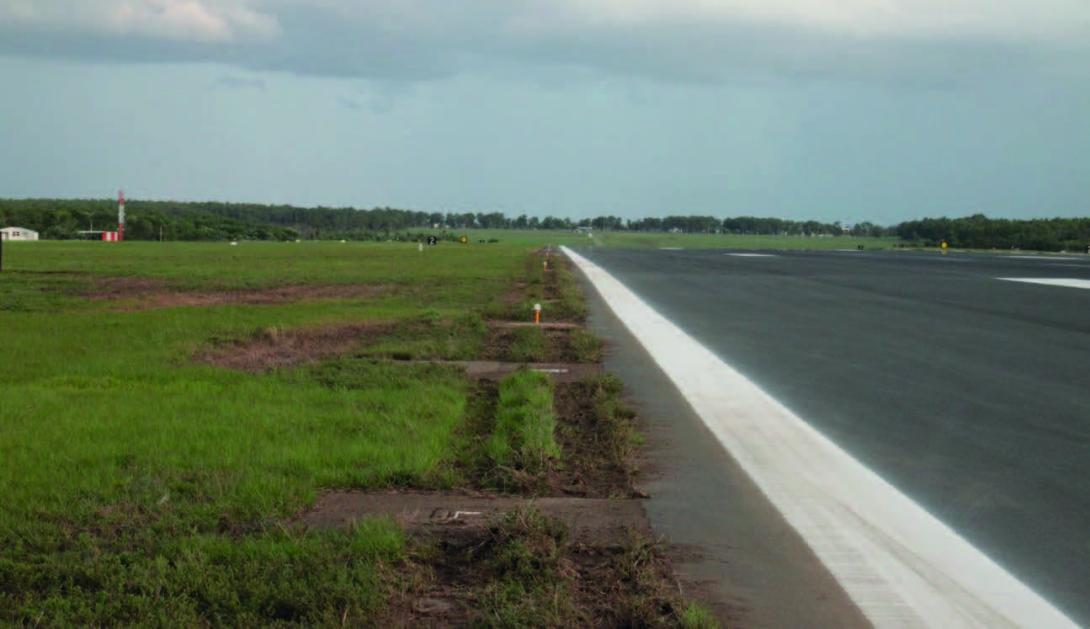A runway excursion involving a Boeing 737 at Darwin Airport on 6 December 2016 draws attention to the effectiveness of centreline lighting on wider than usual runways.

Landing on a wet runway at night, with visibility reduced by heavy rain, the Virgin Australia 737-800 touched down more than 20 m to the right of the runway centreline. The aircraft continued to the side of the runway, and its right landing gear ran just off the edge, destroying six runway lights along a 400 m path before returning to the runway.
There were no injuries and only minor damage to the aircraft.
The ATSB found that a relatively small increase in crosswind had occurred at a critical time a few seconds before touchdown, and the crew were not aware how far the aircraft had deviated.
The two rows of lights alongside runway 29 at Darwin are further apart than what a flight crew would normally encounter, due to the relatively wide runway. The ATSB found that, in the absence of centreline lighting, this characteristic affected the crew’s ability to detect and correct the aircraft’s deviation.
“A wide runway without centreline lighting, such as at Darwin, poses a particular challenge for aircraft making approaches in darkness and heavy rain,” said ATSB Executive Director Transport Safety Mr Nat Nagy.
“In these circumstances centreline lighting greatly helps flight crews align the aircraft with the runway.”
While studying past reports of runway side excursions in reduced visibility, ATSB investigators discovered that a disproportionate number of them occurred on wider runways.
In response to the ATSB investigation, both the aircraft operator and airport initiated a number of safety actions, including providing flight crews with information about the specific risks of approaches to Darwin Airport at night in conditions with reduced visibility.
“It is important for pilots and operators to be aware of any circumstances that are different to what they usually encounter and account for it in their planning so that they are more likely to avoid being ‘caught out’ at a critical time,” Mr Nagy said.
The International Civil Aviation Organization (ICAO) recommends, but does not mandate, the installation of centreline lighting on wider runways. Of the two runways wider than 50 m in Australia, Darwin’s runway is the only one without centerline lighting.
The ATSB previously recommended the installation of centreline lighting at Darwin Airport after a 2003 runway side excursion. Its concerns were renewed following a 2008 hard landing though no recommendation was issued.
Darwin Airport is a joint military and civilian facility – the Department of Defence owns much of the airport infrastructure, including the runways, while Darwin International Airport operates the civilian aspects of it. Both have advised the ATSB that the installation of centreline lighting will be considered during any future runway works.
While studying past reports of runway side excursions in reduced visibility, ATSB investigators discovered that a disproportionate number of them occurred on wider runways. None of the studied excursions occurred on runways that had centreline lighting.
As a result, the ATSB issued a safety recommendation to ICAO to review the runway lighting standards in light of the new evidence available.
Read the report: Runway excursion involving Boeing 737, VH-VUI, at Darwin Airport, Northern Territory, on 6 December 2016


